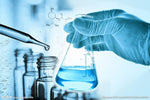
Hyaluronic Acid
, 3 min reading time

, 3 min reading time
Hyaluronic acid is a natural substance found in the fluids in the eyes and joints. It acts as a cushion and lubricant in the joints and other tissues.
Different forms of hyaluronic acid are used for cosmetic purposes. Hyaluronic acid might also affect the way the body responds to injury and help to decrease swelling.
People also commonly take hyaluronic acid by mouth and apply it to the skin for UTIs, acid reflux, dry eyes, wound healing, aging skin, and many other conditions, but there is no good scientific evidence to support most of these other uses.
When applied to the skin: Hyaluronic acid is likely safe when used appropriately. Allergic reactions might occur but are rare.
Skin aging is a multifactorial process consisting of two distinct and independent mechanisms: intrinsic and extrinsic aging. Youthful skin retains its turgor, resilience and pliability, among others, due to its high content of water.
Daily external injury, in addition to the normal process of aging, causes loss of moisture. The key molecule involved in skin moisture is hyaluronic acid (HA) that has unique capacity in retaining water. There are multiple sites for the control of HA synthesis, deposition, cell and protein association and degradation, reflecting the complexity of HA metabolism. The enzymes that synthesize or catabolize HA and HA receptors responsible for many of the functions of HA are all multigene families with distinct patterns of tissue expression. Understanding the metabolism of HA in the different layers of the skin and the interactions of HA with other skin components will facilitate the ability to modulate skin moisture in a rational manner.
Human skin aging is a complex biological process, not yet fully understood. It is the result of two biologically independent processes.
Intrinsic skin aging is influenced by hormonal changes that occur with age, such as the gradual decreased production of sex hormones from the mid-twenties and the diminution of estrogens and progesterone associated with menopause. It is well established that the deficiency in estrogens and androgens results in collagen degradation, dryness, loss of elasticity, epidermal atrophy and wrinkling of the skin. Even though intrinsic and extrinsic skin aging are distinctive processes, they share similarities in molecular mechanisms. elevated levels of degraded collagen and reduced collagen synthesis are pathologies occurring in intrinsically aged as well as photoaged skin.
Skin aging is also associated with loss of skin moisture. The key molecule involved in skin moisture is hyaluronan or hyaluronic acid (HA), a glycosaminoglycan (GAG) with a unique capacity to bind and retain water molecules.
The available data suggest that HA homeostasis exhibits a distinct profile in intrinsic skin aging, which is totally different of that in extrinsic skin aging. Additional insight needs to be gained in understanding the metabolism of HA in skin layers and the interactions of HA with other skin components. Such information will facilitate the ability to modulate skin moisture in a rational manner and may contribute to the refinement of current drugs and the development of novel treatments for skin aging.
https://www.ncbi.nlm.nih.gov/pmc/articles/PMC3583886/